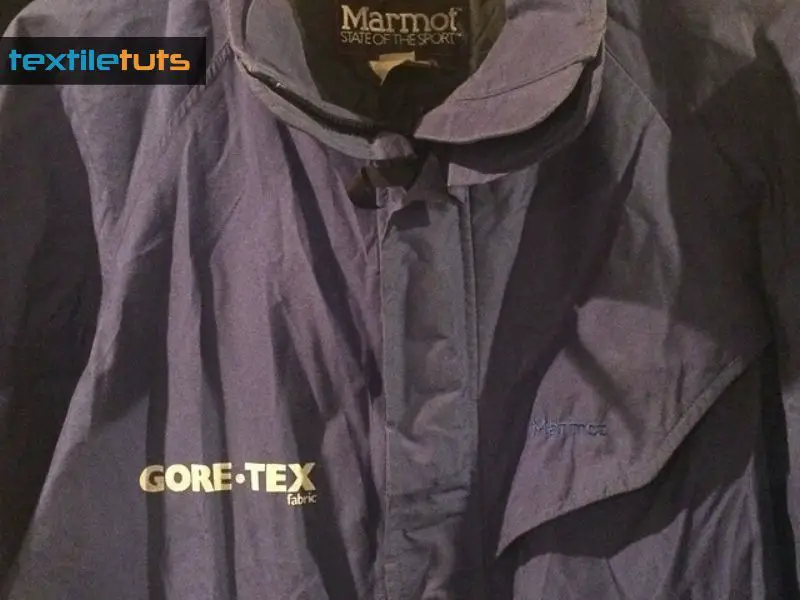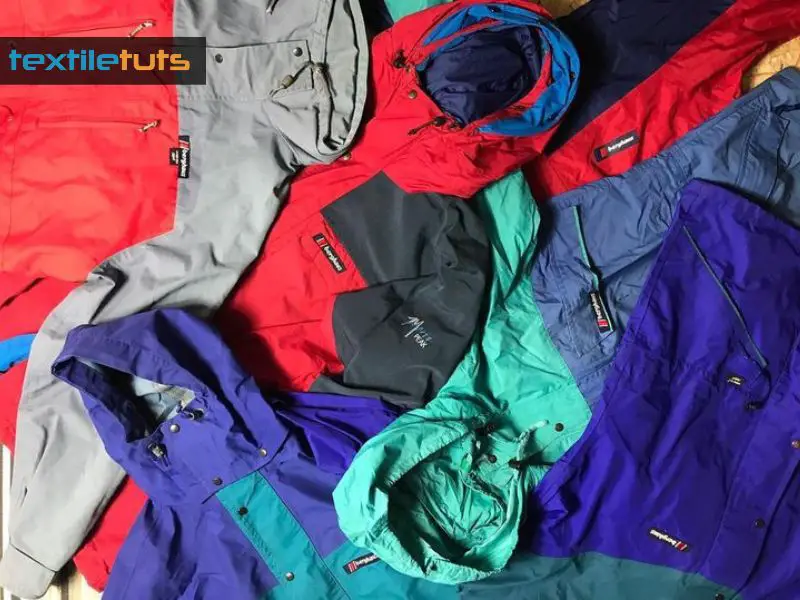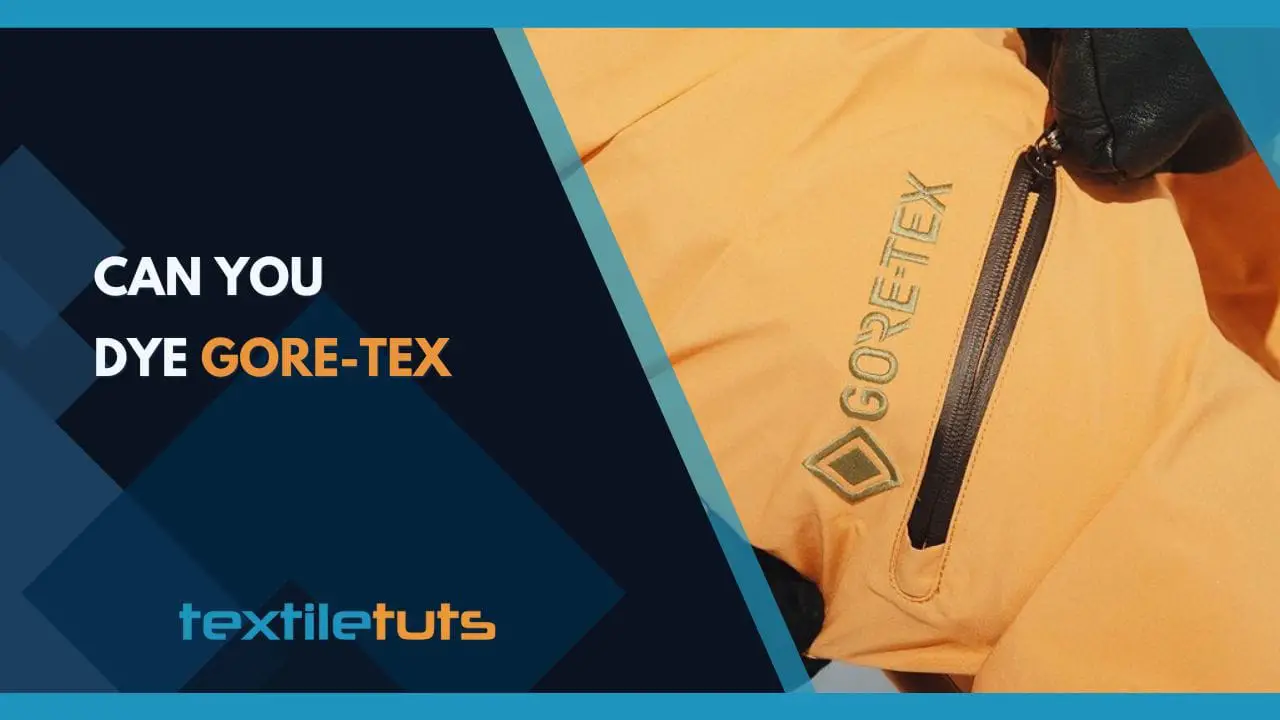Can You Dye Gore-Tex? The Do’s and Don’ts
Embarking on outdoor adventures doesn’t mean compromising on style. Still, you might wonder about personalization with high-performance gear like Gore-Tex: Can you dye Gore-Tex without compromising its integrity?
Yes, you can dye Gore-Tex, but it requires specific dyes and careful application to avoid damaging the waterproof and breathable membrane. Always follow manufacturer guidelines and consider professional services for the best results.
Let’s delve into the do’s and don’ts of customizing the color of your Gore-Tex apparel and equipment. I’ll ensure that you make informed decisions that preserve the functionality of your gear while letting your style shine through.
The Dyeing Debate: Is It Possible with Gore-Tex?
Gore-Tex, a waterproof and breathable fabric widely used in outdoor gear, is composed of an ultra-thin membrane bonded to high-performance textiles.
Dyeing Gore-Tex fabric is not recommended by the manufacturer due to the risk of compromising its waterproof/breathable membrane integrity. The unique properties of Gore-Tex come from its pore structure, which can be clogged or damaged by the dyeing process, interfering with its functionality.
Furthermore, professional re-dyeing services that handle technical fabrics are rare, as the process requires specialized knowledge and equipment to maintain the fabric’s performance characteristics.
If a Gore-Tex item needs a color refresh, the best practice would be to use surface treatments like specialized fabric markers or sprays designed for technical fabrics, always ensuring they’re compatible with Gore-Tex materials.
You just need to follow the manufacturer’s guidelines and instructions to avoid damaging the fabric and compromising the product’s warranty or performance.
Pre-Dye Considerations for Dying Gore-Tex
Dyeing Gore-Tex, or any other high-performance waterproof and breathable fabric, is a task that requires careful preparation and consideration, as improper dyeing techniques or materials could damage the garment’s functionality. Below, we break down the key pre-dye considerations to ensure the successful dyeing of Gore-Tex fabrics.

Understanding Gore-Tex Fabric
- Composition and Structure: Gore-Tex is a patented fabric known for its waterproof, windproof, and breathable membrane. The membrane is typically bonded between the high-performance lining and outer fabrics.
- Performance and Care: The garment’s performance depends on the integrity of this membrane, and harsh chemicals or improper dyeing methods can damage it. Read the care instructions carefully before proceeding.
Choosing the Correct Dye
- Compatibility: Not all dyes are suitable for Gore-Tex or synthetic fabrics. Ensure the type of dye you choose is formulated for use on synthetic materials, like polyester or nylon, which are commonly used for the outer layers of Gore-Tex apparel.
- Quality and Brand: Opt for high-quality dyes from reputable brands to reduce the risk of uneven dyeing or damage to the fabric’s properties. Dyes intended for synthetic fabrics typically require a heat setting, which may not be suitable for all Gore-Tex garments.
Pre-Dye Testing
Spot Test: Before fully dyeing the garment, perform a spot test in an inconspicuous area to see how the fabric reacts to the dye. This will help determine if the color sets properly and if there is any adverse effect on the fabric’s performance.
Color Expectation: Managing color expectations is necessaey when dyeing Gore-Tex fabrics. The color may not appear as vibrant or as consistent as it would on natural fibers.
Cleaning the Garment
- Dirt and Oils: Before dyeing, the garment should be thoroughly cleaned to remove any dirt, oils, or residual detergents. These can affect how the dye takes to the fabric and result in uneven coloring.
- Laundry Instructions: Follow the manufacturer’s cleaning instructions carefully to avoid damaging the fabric. Certain chemicals and solvents can degrade Gore-Tex membranes, so it’s crucial to use appropriate cleaners.
Preparing the Work Area
- Protection Measures: Set up a workspace with plenty of ventilation and protect surrounding areas from potential spills. Dye can permanently stain surfaces and materials it comes into contact with.
- Safety Equipment: Always wear gloves and old clothing or protective gear to prevent skin contact with the dyes. It is also advisable to wear a mask to avoid inhaling any fine particles or fumes.
Temperature and Time Considerations
- Dye Bath Temperature: Gore-Tex materials often require lower heat settings to prevent damaging the membrane. Make sure the dye you select is effective at these temperatures. Some dyes for synthetic fabrics need boiling water, which may not be appropriate for Gore-Tex.
- Timing: Follow the recommended time for the dye to set on the fabric. Leaving the garment in the dye solution for too long can result in oversaturation or unexpected color shades.
Dyeing Techniques for Gore-Tex Materials
Dyeing Gore-Tex is not without risks. It’s very possible to damage the membrane, which makes the fabric waterproof and breathable. Here’s a guide to help with the dyeing process, assuming the dye is compatible with Gore-Tex material.
Dye Selection
Not all dyes work on all types of fabrics. For materials like Gore-Tex, which are likely a blend of polyester or similar synthetics, acid dyes or disperse dyes are usually recommended. These types of dyes are formulated to bond with synthetic fibres at high temperatures.
Testing First
Always test the dye on a small, inconspicuous area of the fabric first. This will allow you to see how the dye reacts with the fabric in terms of colorfastness, potential damage, and actual color outcome.
Dyeing Process
- Preparing the Fabric: Before dyeing, make sure the Gore-Tex garment is clean. Any oils, dirt, or debris can affect dye uptake and result in uneven coloring.
- Setting Up the Workspace: Protect the workspace with a plastic cover or old newspapers, wear gloves, and make sure the area is well-ventilated. Safety should always be a priority when working with dyes and chemicals.
Dye Bath Preparation
Following the dye manufacturer’s instructions, prepare the dye bath. This will typically involve dissolving the dye in hot water. The temperature of the water is critical, as too high of heat can damage Gore-Tex. It’s best to err on the side of a cooler temperature when working with sensitive fabrics.
Dyeing the Fabric
Gently immerse the Gore-Tex garment into the dye bath. The fabric should move freely in the dye bath to ensure even dyeing. Keep the item in the dye for the recommended amount of time, stirring occasionally. Avoid prolonging the process, as this can saturate the fabric and damage its waterproof properties.
Post-Dyeing Care
- Rinsing: Once the dyeing process is finished, rinse the garment in warm water, progressively changing to cooler water until the water runs clear. This step removes any excess dye, which is crucial for maintaining the waterproof qualities.
- Reapplying DWR: The dyeing process can strip away the durable water-repellent (DWR) finish that is applied to most Gore-Tex outer layers. Reapply a DWR coating after dyeing to ensure the material retains its water-repellent properties.
- Drying: It’s essential to allow the Gore-Tex garment to dry completely. Follow the manufacturer’s guidelines for drying, as high temperatures can again damage the membrane.
Alternatives to Dyeing: Creative Ways to Customize Your Gore-Tex Gear
While dyeing Gore-Tex gear may not always be feasible due to the technical nature of the fabric, there are several alternative methods to customize and personalize your outdoor apparel without compromising its performance. Below, I will discuss creative techniques that can give your Gore-Tex gear a fresh new look. One popular option is to use fabric paint or markers specifically designed for outdoor materials, allowing you to add unique patterns or designs to your gear. When choosing the best paint for clothing, make sure it is compatible with synthetic fabrics and waterproof surfaces to maintain the gear’s integrity. Additionally, you can explore iron-on patches or adhesive decals as a non-permanent way to personalize your items while keeping their functionality intact.

Patches and Appliques
- Using Iron-On or Sew-On Patches: Patches are a popular way to add a personal touch to outdoor gear. You can select from a wide array of designs or even create custom patches. Iron-on patches offer a quick fix, but for durability, especially on waterproof gear, sewing them on might be preferable.
- Custom Appliques: Another similar approach is to use fabric appliques. These can be cut into any shape and sewn onto your Gore-Tex gear, allowing for maximum customization.
Stenciling and Painting
- Acrylic Paints for Fabric: Specialized acrylic paints or fabric paints can be used to stencil or freehand designs onto your gear. Make sure to use paints that can withstand the weather and outdoor use.
- Creating Stencils: Stencils can be made from cardboard or mylar sheets. Once you have a stencil, you can use a sponge or brush to apply the paint and create your design.
Embroidery
- Hand Embroidery: For those willing to invest the time, hand-embroidered designs can add a unique and durable flair to your gear. This method requires sewing knowledge and patience but results in a highly personal touch.
- Machine Embroidery: Machine embroidery is faster than hand stitching and can produce complex designs with ease. However, ensure that the process does not puncture the waterproof membrane or compromise the Gore-Tex’s performance.
Vinyl Decals
- Heat Transfer Vinyl: Adhesive vinyl that is specifically made for fabric can be used to add shapes, designs, or text to your gear. Heat transfer vinyl (HTV) is applied with an iron or heat press, but make sure to use a low-temperature setting to avoid damage to the fabric.
- Durability: Vinyl decals can be quite durable, especially if properly applied, and do not affect the waterproofing ability of the fabric as they sit on the surface.
Screen Printing
- Silk Screen Techniques: Screen printing with inks that are compatible with synthetic fabrics can be a way to add logos or larger designs to your gear. It requires some equipment and practice to perfect but can result in professional-looking customization.
- Mesh Counts and Inks: For printing on Gore-Tex, it’s important to use the right mesh count and ink type to ensure the design adheres well and stands up to exposure without blocking the fabric’s pores.
Conclusion
The decision to dye Gore-Tex material boils down to a delicate balance between the desire for aesthetic customization and the preservation of the fabric’s functional integrity.
While it is possible under certain conditions, the process requires careful consideration to not compromise the technical performance that Gore-Tex is renowned for.
As enthusiasts look to personalize their gear, they should do so with an awareness of and respect for the material limits, ensuring that any modifications align with maintaining the garment’s breathability and waterproof capabilities.
You should explore the available methods and products that are specifically designed for synthetic fabrics, and consider professional services if uncertain.

